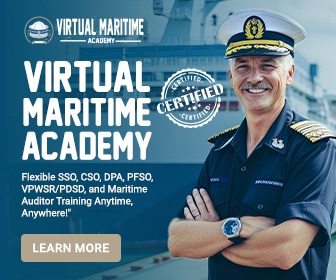The global maritime industry operates as a well-oiled machine, ensuring the seamless movement of goods and people across the oceans. At the heart of this complex operation lies the Standards of Training, Certification, and Watchkeeping for Seafarers (STCW). Introduced by the International Maritime Organization (IMO), the STCW Convention sets essential training benchmarks for seafarers to enhance safety and efficiency at sea. Recognized internationally, these rigorous standards have evolved significantly since their inception in 1978, adapting to advancements in technology and increasing safety demands.
For those new to the maritime world, understanding and completing STCW training is an indispensable first step. This training is designed to equip new entrants with critical skills through a combination of theoretical knowledge and practical exercises. Key components include Basic Safety Training (BST), which covers fundamental safety modules necessary for all seafarers, and advanced, specialized courses aimed at specific maritime roles. Continuously updating certifications and engaging in ongoing professional development are equally crucial, ensuring seafarers remain proficient in the latest safety practices and regulations.
Navigating the requirements and benefits of STCW training can be daunting for newcomers. However, mastering this information is vital for a successful and rewarding career at sea.
Introduction to STCW Training
Overview of the STCW Convention and its Importance in the Maritime Industry
The International Convention on Standards of Training, Certification, and Watchkeeping for Seafarers (STCW) is a comprehensive framework instituted by the International Maritime Organization (IMO). Established to promote safety and environmental protection at sea, the STCW Convention ensures that all seafarers meet the minimum training standards required to perform their duties effectively.
STCW training is crucial as it provides the necessary knowledge and skills to handle the complexities of maritime operations. Ensuring competence in various shipboard roles, the training is mandatory for all who wish to work aboard internationally voyaging vessels. By setting standardized criteria, the STCW Convention fosters uniformity, thus enhancing safety, reducing accidents, and promoting environmental sustainability in maritime operations.
Brief History and Evolution of STCW Standards
The STCW Convention was first adopted in 1978 and has undergone several amendments to adapt to the ever-evolving maritime industry. The original 1978 Convention was a milestone, introducing worldwide minimum standards of training, certification, and watchkeeping for seafarers. However, it became clear that updates were necessary to address the increasing complexities and technological advancements in the field.
Significant amendments were made in 1995, known as the STCW 95 revisions, which refined the training standards and introduced mandatory courses and assessments. The Convention was further revised in 2010, resulting in what is known as the Manila Amendments. These amendments aimed to enhance the competencies of seafarers to cope with modern maritime challenges, including updated proficiency standards and new training requirements, such as those related to security training and electronic chart display and information systems (ECDIS).
The historical progression of the STCW standards reflects an ongoing commitment to maritime safety and operational efficiency. Continuous updates ensure that crew members are equipped to handle emergent technologies and regulatory changes, which ultimately bolster the maritime industry’s global safety framework.
https://www.virtualmaritime.academy/vma-courses/
Essential Components of STCW Training for New Entrants
Basic Safety Training (BST): Overview and Modules
The cornerstone of STCW training is the Basic Safety Training (BST) course, a mandatory program designed to equip new entrants with essential safety skills. BST consists of several key modules, each focusing on specific aspects of maritime safety:
- Personal Survival Techniques: This module trains seafarers in survival skills, including the use of life jackets, lifeboats, and other survival equipment. Participants learn critical techniques for surviving at sea in various emergency situations.
- Fire Prevention and Fire Fighting: Fire poses one of the most significant risks onboard a vessel. This module covers the principles of fire prevention, the use of firefighting equipment, and practical firefighting exercises to ensure proficiency in handling onboard fires.
- Elementary First Aid: Providing immediate medical care can be a lifesaver. This module teaches basic first aid skills, such as CPR, wound treatment, and initial response to common onboard medical emergencies.
- Personal Safety and Social Responsibilities: Understanding the importance of safety protocols and social responsibilities is crucial for maintaining a safe working environment. This module addresses safety measures, accident prevention, and the establishment of a positive onboard culture.
The Basic Safety Training course ensures that all seafarers, regardless of their role, can respond effectively to emergencies, thereby enhancing overall ship safety.
Advanced Training Programs: Specialized Courses and Certifications
Beyond basic safety, the STCW Convention mandates advanced training for seafarers who will undertake specific roles and responsibilities. These specialized courses ensure that crew members possess the necessary expertise for their designated duties. Some of the advanced training programs include:
- Advanced Fire Fighting: This course builds upon the basic fire fighting module, providing in-depth knowledge of fire dynamics, advanced firefighting techniques, and the management of fire-fighting operations. It is particularly relevant for officers and key personnel involved in safety management.
- Proficiency in Survival Craft and Rescue Boats: Seafarers are trained in the use and maintenance of survival craft and rescue boats, including launching procedures, handling lifeboats in rough weather, and conducting rescue operations.
- Medical First Aid and Medical Care: For vessels without immediate access to professional medical services, crew members must be capable of providing advanced medical care. These courses cover medical diagnosis, treatment procedures, and the use of medical equipment available onboard.
- Security Awareness and Designated Security Duties: Maritime security is paramount, especially given global security concerns. These courses address security measures, threat recognition, and appropriate responses to security incidents. They are crucial for crew members with specific security responsibilities.
Specialized training ensures that seafarers are not only compliant with international regulations but also equipped with the skills needed to perform their duties safely and effectively.
Importance of Keeping Certifications Updated and Continued Professional Development
The maritime industry is dynamic, with constant advancements in technology, safety protocols, and regulatory requirements. As such, it is imperative for seafarers to keep their certifications up-to-date. Regular refresher courses and re-certifications are mandatory to ensure ongoing compliance with STCW standards. Key reasons for maintaining current certifications include:
- Regulatory Compliance: Updated certifications are essential for legal compliance. Maritime authorities require proof of current certifications to validate that seafarers meet the necessary standards to operate safely.
- Enhanced Safety: Keeping skills and knowledge current ensures that seafarers can respond effectively to emergencies. Regular training updates incorporate the latest best practices and technological advancements, thereby enhancing overall vessel safety.
- Career Advancement: Continued professional development opens doors for career progression. Advanced certifications and specialized training demonstrate a commitment to the profession, making seafarers competitive candidates for promotion and advanced roles.
- Adaptation to Industry Changes: The maritime industry is subject to periodic changes in regulations and technologies. Updating certifications ensures that seafarers remain informed about new standards and practices, allowing them to adapt seamlessly to industry evolutions.
Continued professional development is not limited to mandatory courses. Seafarers are encouraged to engage in additional training programs, attend industry seminars, and participate in workshops to broaden their skills and knowledge base. This proactive approach to professional growth not only enhances individual competency but also contributes to the overall advancement of the maritime industry.
By understanding and prioritizing these essential components of STCW training, new entrants can ensure they are well-prepared for a successful and safe career at sea.
The STCW (Standards of Training, Certification, and Watchkeeping) Convention serves as a cornerstone in maintaining the safety and efficiency of the maritime industry. From its inception, the STCW has set a standardized framework for training, which has evolved to meet the ever-changing demands of global maritime operations. For new entrants, understanding the components of STCW training is critical; it sets the foundational knowledge and skills needed to embark on a maritime career successfully.
Basic Safety Training (BST) is essential for all new maritime professionals. This training encompasses fundamental modules that cover personal survival techniques, fire prevention and firefighting, elementary first aid, and personal safety and social responsibilities. These core areas ensure that seafarers can respond effectively to emergencies, uphold safety standards, and maintain personal wellbeing onboard.
As seafarers progress in their careers, advanced training programs become increasingly relevant. Specialized courses such as advanced firefighting, medical care onboard ship, and proficiency in survival craft and rescue boats offer in-depth knowledge and skills required for specific roles and responsibilities. Each certification obtained not only enhances a seafarer’s competency but also boosts their employability in an industry that prioritizes safety and expertise.
Given the dynamic nature of maritime operations, keeping certifications updated is of paramount importance. The maritime industry is continuously affected by technological advancements and regulatory changes, necessitating ongoing professional development. Regular refresher courses and updated training ensure that seafarers remain knowledgeable about the latest safety protocols and best practices.
In conclusion, STCW training is indispensable for new entrants embarking on a maritime career. It provides a structured pathway for acquiring essential skills, emphasizes the importance of advanced specialized training, and underscores the need for continuous professional development to adapt to industry advancements. As maritime professionals uphold the principles of STCW, they contribute to safer and more efficient maritime operations worldwide.







